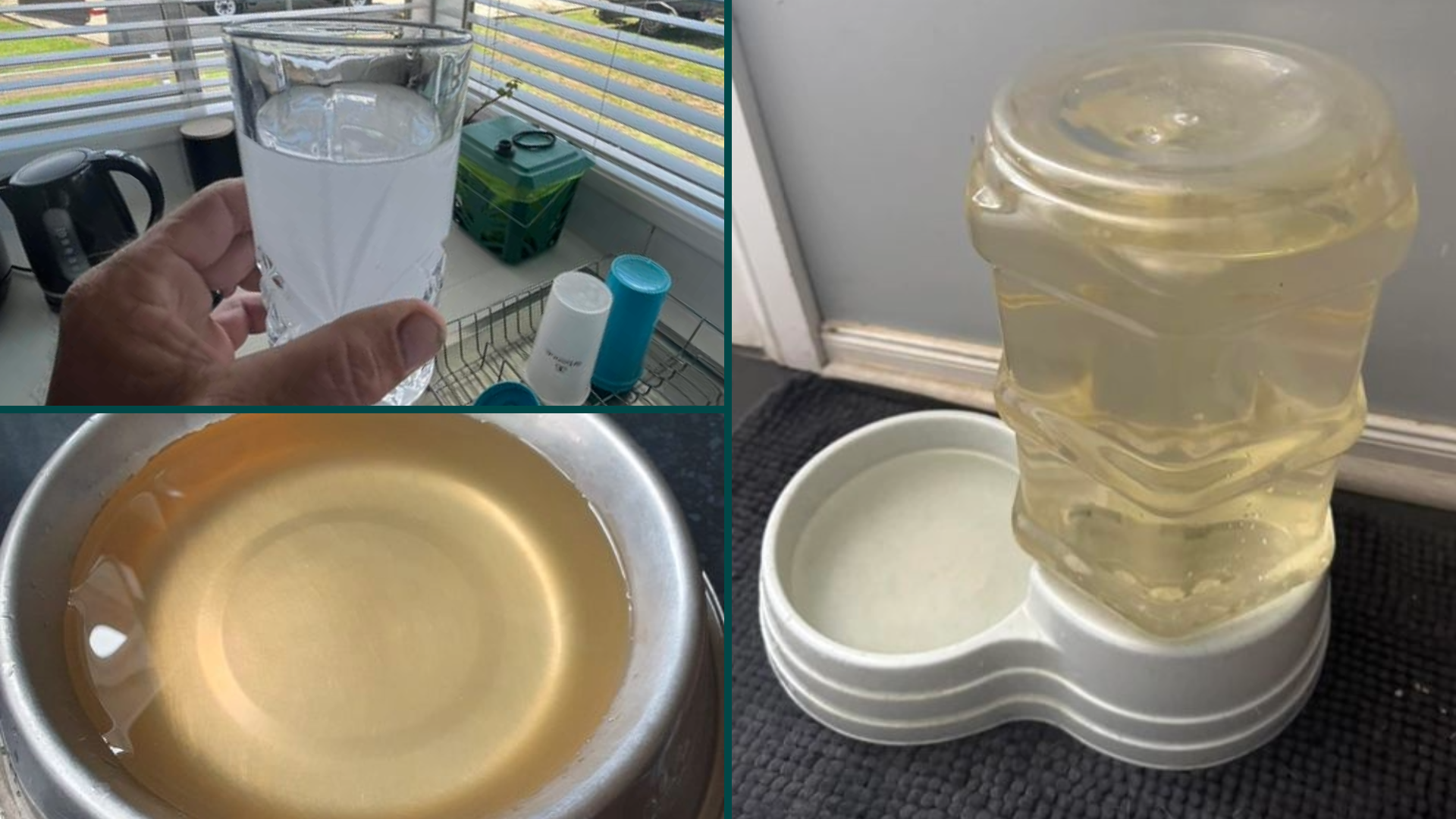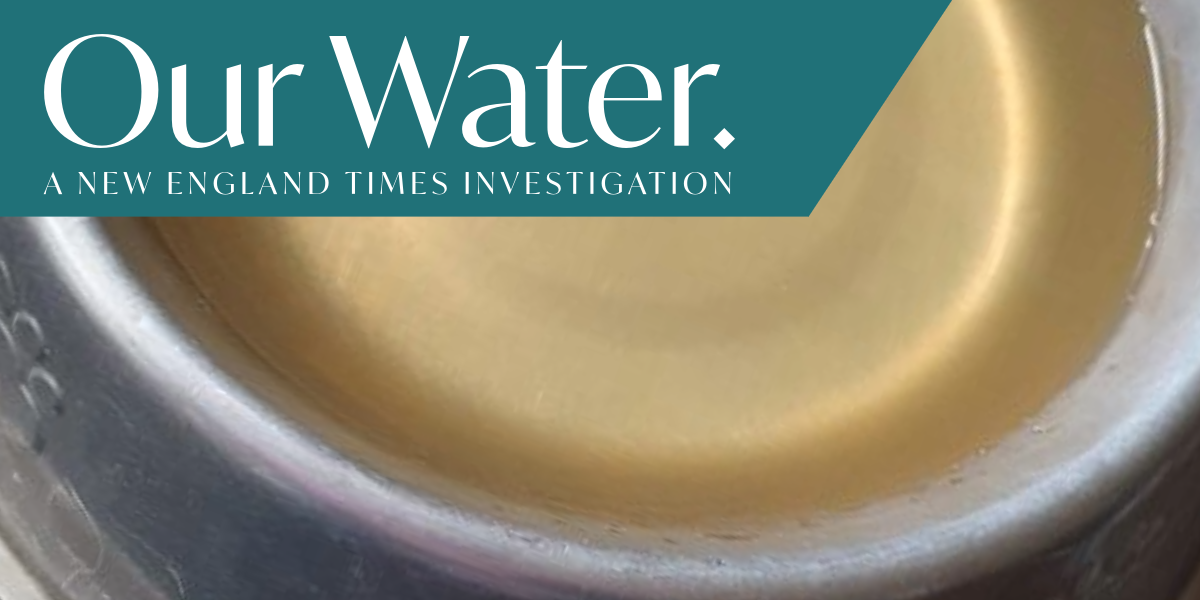
There are many things that people who live in larger cities take for granted. Decent roads, access to health care, or the ability to call a taxi, for example. And most certainly, they take for granted that you can turn the tap on and safe, drinkable water will come out.
And yet, in some parts – but by no means all – of the New England, poor water quality is an ever-present issue.
The complaints in a number of New England centres are almost identical: the water stinks, it tastes bad, it’s making us sick. And it has been like this for years.
Not everywhere, not forever
The vast majority of water quality issues and alerts that happen in the New England are temporary issues, such as blue-green algae outbreaks.
Blue-green algae is a bacteria – called cyanobacteria – which looks green, but turns blue as it starts to die. If the water gets warm and water flows are low – like they usually are in much of our region in summer – the levels of blue green algae increase to the point they start to affect water quality. High levels of nutrients, like phosphorous and nitrogen, in the water also makes things worse, which means that in agricultural areas where fertiliser use is high, you’re also at a greater risk of a blue green algae outbreak.
According to the CSIRO, If blue-green algae multiply to high numbers, toxins may be produced causing health problems for people, domestic animals and stock that come into contact with the algae. There have been reports of skin and eye irritations, nausea, vomiting, muscle weakness or cramps by some those who have swallowed or swum through algal scum.
And while all the councils in our area who deal with the challenge of blue-green algae assert that they treat the issue and water is safe to drink, these same health complaints are repeatedly reported by people drinking town water in affected areas.
There are currently red alerts in place for blue-green algae outbreaks for the Macintyre River at Inverell, including Lake Inverell, and Quipolly Dam near Werris Creek. These outbreaks, like the regular outbreaks at Tamworth’s Chaffey Dam, are largely well managed by the larger and newer water treatment plants at those centres.
The Guyra Dam, which is not monitored by WaterNSW, has been at ‘Red’ alert level for months, with warnings that having contact with the water in the Gara River south of the town’s water supply could be hazardous to both livestock and human health. (The Red Alert was still on the ARC website at the time of publishing, but WaterNSW believes the Red Alert may have been lifted in April.)
Gaslit in Guyra
Largely attributed to a heat wave in December 2023 causing a large algal bloom, the complaints about poor water quality from the 2100 residents in Guyra have been widespread for the last six months or so.
Guyra resident Jenny says no amount of filtering seems to work.
“We have just moved here and are disgusted with the taste quality of the water.”
“It has a taste like algae or mould which even a filter jug is struggling to remove.”
Many locals are also arguing the recent algae bloom is not the issue, some posting pictures or re-sharing old Facebook posts showing discoloured water from years ago.
“While The Council is blaming the drought and the hot summer and algae, a picture from 7 years ago came up on my memories today….. the water has been hideous for years,” Rebecca wrote sharing near identical photos of a jug of tea-coloured water to the Guyra – What’s on your mind? group on Facebook.
“I feel bad giving it to my dog to drink!”
A number of people noticed their dogs won’t drink the water in their bowls, instead drinking from puddles of rain water or out of pot plants. Michele says the brown water in her dog’s bowl (pictured above) came out of her inside tap.
“I’ve seen the water in my daughters dogs bowl go green and slimy in a day and a half. That’s even after scrubbing the bowl clean.”
“It’s really not good enough we have to pay for water of this poor quality,” Michele said.
Outgoing Member for Northern Tablelands, Adam Marshall, called for a new water treatment plant in 2018. Mr Marshall said at the time that discoloured, foul smelling and poor quality potable water from the local water supply had been an ongoing issue.
While the pipeline from Malpas Dam built in 2019 addressed the supply issue, the need for a new water plant appeared to disappear from the agenda, and the water quality issues have persisted.

‘Nothing we can do about it’
Christine says she became ill from drinking unfiltered tap water at a Christmas lunch function in Guyra in December 2023.
“Because lunch was taking its time, I drank a fair bit of water, not knowing that it wasn’t filtered. Within half an hour of me getting home, I was sick.”
“And it couldn’t have been the food cause we all ate the same thing. So I put it down to the water, because that’s the only other thing I had.”
Christine has been sick on and off ever since the fated Christmas lunch. As well as persistent tummy upsets, she often gets itchy after a shower. She’s seen the doctor and had tests done which didn’t show anything specific.
Christine has also complained to Armidale Regional Council, and says she spoke to a senior member of staff for an hour about the persistent water issues.
“He said, ‘Oh, there’s nothing we can do about it, there’s blue-green algae in the dams, we’re doing everything we can’.”
“And he also told me that the filters haven’t been changed to something like 21 years and they need to upgrade all their filtration system.”
“But he said that’s cost going to cost millions, so probably won’t happen.”
Bureaucrats not helping
Christine also claims this member of staff told her she couldn’t have tank water.
“I talked to him for an hour and I said I want a blinking tank on here and I want showers with tank water and tank water through.”
“And he said, well, you can’t do that. You can have tank water, but that can only go to the toilet and the laundry.”
“That’s not much good because really what you need is the showers and drinking.”
In January, Armidale Regional Council’s Chief Officer Assets Alex Manners wrote an open letter to the community about the issues, with the intent of reassuring residents the water was safe to drink.
“One of the challenges facing local operators is the age, design and condition of the Water Treatment Plant (WTP) in Guyra which was constructed in the 1980s. The WTP requires operators to manually adjust the treatment process based on water quality being received from the Guyra dams. (There is no automated response as at updated facilities in other areas),” Mr Manners wrote.
“Unfortunately, the existing treatment process allowed for water with higher than usual taste and odour to enter the water reticulation system.”
“While the former Guyra Shire Council did not have the opportunity or resources to update the plant, we are pleased that this work will soon be done.”
The swipe at the former Guyra Shire Council in the open letter from Mr Manners did not go down well with many in the community. Guyra has consistently voted against amalgamation prior to the forced merge, continue to rally and organise for deamalgamation, and recently formed a new ratepayer’s association to lobby for better service from Armidale Regional Council.
Compounding problems and priorities elsewhere
Many locals believe their water is bad and getting worse because Armidale Regional Council doesn’t care about Guyra, and if they had their own council again these issues would be addressed.
The relationship between the community and its water supplier were not helped when a power outage on February 18 shut down the Guyra Water Treatment Plant, which apparently has no solar or generator backup power source, and residents had to be asked to conserve water.
Then, on March 8, works being undertaken by Council with officers from the Department of Climate Change, Energy, the Environment and Water (DCCEEW) to optimise treatment processes to resolve water quality issues, resulted in the opposite: high levels of manganese and a notice about discoloured water.
Both the NSW Department of Health and the NSW Department of Environment and Water confirmed they are providing technical assistance to the Armidale Regional Council to manage the water in Guyra.
Armidale Regional Council itself, and ARC Mayor Sam Coupland, did not respond to multiple requests for information and comment on the situation.
And while the intensity of complaints in Guyra have eased off a little as the winter weather sets in and the algae dies off, there is no indication that fixing the substantive issues with Guyra’s water infrastructure will be a priority anytime soon.
WaterNSW this week announced a partnership with ARC under the NSW Government’s Town Water Risk Reduction Program’, a program to encourage collaboration between local councils and state services to implement long-term changes to better manage water infrastructure.
But the initial work will be on Armidale’s water supply sources of Dumaresq and Malpas dams, not Guyra’s water supply.
Read part 2 of our investigation: Small towns, hard water, old pipes, and no data: a recipe for hiding water quality issues
Like what you’re reading? Support New England Times by making a small contribution today and help us keep delivering local news paywall-free. Donate now

